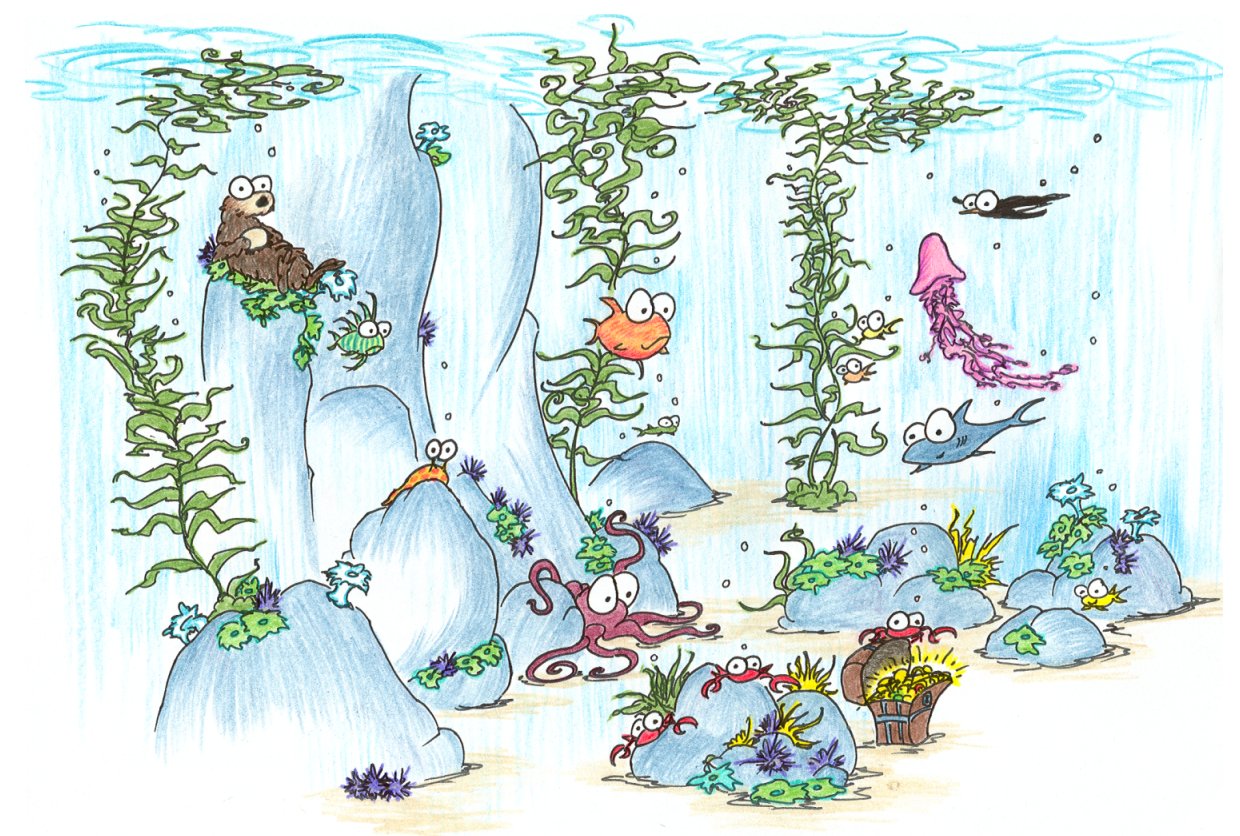Today we started by discussing the kelp forest. Kelp forests are dominated by kelp that can grow to 300 feet tall. The kelp is held near the surface by lots of air bladders. Kelp forests are important because they provide a lot of substrate and habitat for organisms to live, hide and eat.
We also discussed sea grass beds. Sea grass is super-important for stabilizing the substrate and holding the sand down. This promotes water clarity and decreases turbidity. Nothing eats sea grass when it is alive except for manatees. Everything else eats it after the bacteria have decomposed it a bit.
 One of the weird- est, but also most inter- esting is Whalefall. Whalefall is when a dead whale settles to the bottom of the ocean and organisms move in to feed on the carcass until even the bones are decomposed. Hagfish are a dominant scavenger as well as bacteria. It may not seem like a big deal, but this biome boasts over 160 species that are not found on the surrounding benthos. More info can be found at the link above, or here. Listen to a podcast here.
One of the weird- est, but also most inter- esting is Whalefall. Whalefall is when a dead whale settles to the bottom of the ocean and organisms move in to feed on the carcass until even the bones are decomposed. Hagfish are a dominant scavenger as well as bacteria. It may not seem like a big deal, but this biome boasts over 160 species that are not found on the surrounding benthos. More info can be found at the link above, or here. Listen to a podcast here.Deep sea benthos is another biome and it is pretty boring. Its a gooey squishy substrate populated by some dd scavengers, but there is not a high biodiversity and not a lot of food to eat.
 Not all biomes are found at the bottom of the sea. Along coasts you can find rocky coasts, sandy beaches, salt marshes, mangroves, sea grass beds, kelp forests, and fouling communities.
Not all biomes are found at the bottom of the sea. Along coasts you can find rocky coasts, sandy beaches, salt marshes, mangroves, sea grass beds, kelp forests, and fouling communities.I think fouling communities are really interesting... because all these organisms need is a hard substrate (surface) to stick on. This could be a dock, a pier, a boat, or anything that's in the water long enough. Most people have seen all the 'stuff' growing on the pole legs of piers and docks, but don't really think of the variety of organisms that grow there - or their importance. Most of these organisms are filter feeders and do a lot for water quality. They also break down the surfaces like scavengers... not something we want for our boats and docks we use, but important nonetheless.
There is a lot of information to learn this unit. The Unit 3 Test is one of the hardest of the year, and it will be on Friday.




No comments:
Post a Comment